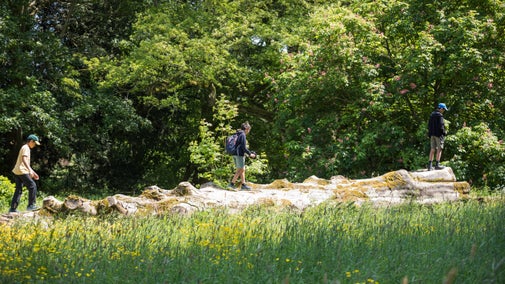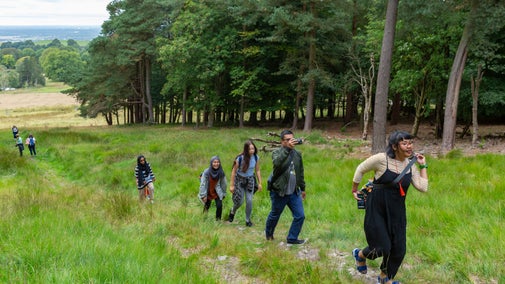
Discover more at Cobham Wood and Mausoleum
Find out how to get to Cobham Wood and Mausoleum, where to park, the things to see and do and more.

All year round at Cobham Wood you can get an idea of what lowland Britain looked like in pre-historic times, as well as discovering some veteran trees and a diverse range of wildlife. Take a look at what you might find on a visit here.
Discover this special site set within the Kent Downs Area of Outstanding Natural Beauty (AONB). Covering almost 190 acres, Cobham Wood is also a Site of Special Scientific Interest (SSSI). It is one of the very few ancient wood pastures still retaining its full structure of open grassland and mature trees.
Enjoy the spectacular views of the surrounding landscape and discover the ongoing management of the woods by the ranger and his team. This work will extend the natural area where we encourage you to walk freely, picnic and enjoy this unique site.

The lower parkland has a more acidic soil, where you will find many ancient oaks. A veteran oak tree can support up to 400 species of flora and fauna. On higher ground, where the chalk is covered by a clay cap, you will find sweet chestnuts, with their spiralled bark, and pollarded hornbeams.
Pollarding entails pruning the upper part of the tree to produce a dense head of branches. This protects the hornbeam buds from the grazing deer and provides wood for use on the estate and as fodder for grazing animals in winter.
If you look at the area behind the Mausoleum (not National Trust), you can see how the woodland looked before the conservation programme. It is choked with a dense mass of smaller trees and undergrowth, providing a much poorer habitat for wildlife.
The wood pasture and parkland are an extremely important habitat for mosses, lichens, fungi and invertebrates, including our largest beetle, the stag beetle. This beetle breeds in rotten timber in tree stumps and beefsteak fungus, the large bracket fungus found on oak trees.

Wood pasture and parkland is a prime habitat for owls and bats, with species such as the noctule bat roosting in the cavities of ageing trees. Standing dead timber is a particularly good habitat, and one such tree stands to the right of a hornbeam opposite the Darnley Mausoleum. These trees are also very important for woodland birds such as greater spotted woodpeckers, tree creepers and nuthatches.
Highland cattle were historically grazed in Cobham Park and have been introduced to help restore the woodland pasture, enabling the mosaic of grasses, herbaceous plants and scrub, which are characteristic of this important environment.
Dogs are welcome at Cobham Wood on leads in the mausoleum and across the estate.

Find out how to get to Cobham Wood and Mausoleum, where to park, the things to see and do and more.
When the vaults in Westminster Abbey became full, the Earl of Darnley commissioned a family mausoleum, but it has never been used for its intended purpose.

Discover the work being undertaken at Cobham Wood and Mausoleum to protect this special place for ever, for everyone.

Plan a visit to one of the special countryside places in our care and discover the benefits of being in the great outdoors. Pack your walking boots and get ready to explore woodlands, valleys and rivers.

Explore some of the finest landscapes in our care on coastal paths, accessible trails, woodland walks and everything in between. Find the best places to walk near you.

From ancient woodland to Iron Age hillforts, the countryside around Kent is ripe for exploring. Discover some of the best spots to get out into fresh air and back to nature.
